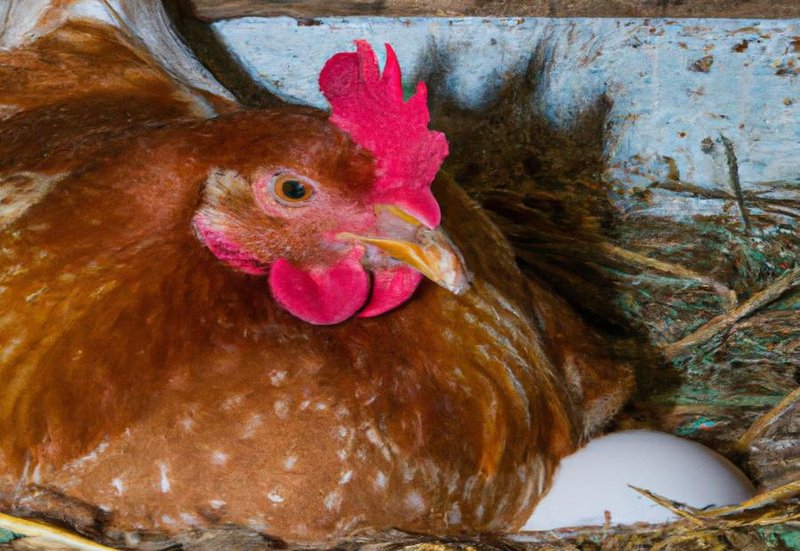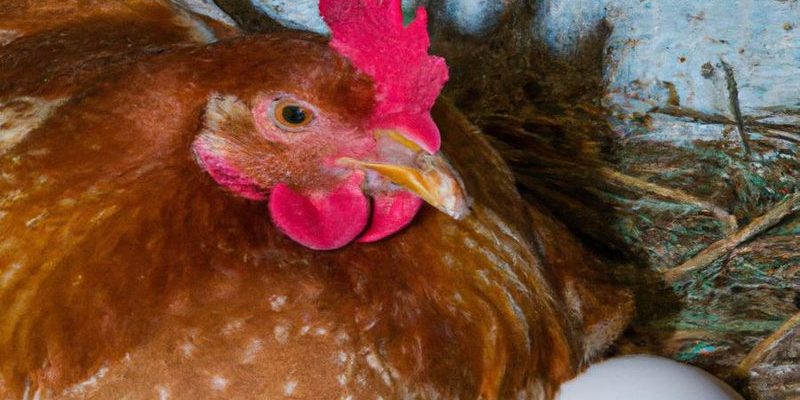
You might picture a cozy coop filled with straw and the soft clucking of hens as they lay eggs. Rhode Island Reds are not just effective layers but also very nurturing with their eggs and chicks. So, let’s dive into their nesting habits and lifecycle and discover what makes these birds so special.
Nesting Habits of Rhode Island Reds
Rhode Island Reds have some distinct nesting habits that set them apart from other poultry. They prefer to lay their eggs in quiet, dark spaces, imitating natural conditions found in the wild. This instinct drives them to seek out secluded corners in their coop or nesting boxes. *Think of it like a toddler hiding in a blanket fort; they thrive on privacy.*
When providing nesting boxes for your Rhode Island Reds, aim for boxes that are about 12 inches wide, 12 inches tall, and 14 inches deep. Make sure to line them with straw or hay to create a comfortable environment. The ideal setup encourages the hens to settle down and lay their eggs peacefully. You might notice that they prefer to lay early in the morning, so checking for fresh eggs soon after sunrise can be a rewarding routine.
Interestingly, Rhode Island Reds can be quite choosy about their nesting spots. Even if you’ve created the perfect nesting box, some hens might still decide to lay their eggs in random areas. If that happens, it’s a good idea to gently relocate the eggs back to the designated nesting site. This helps reinforce the habit and keeps your coop organized.
The Egg-Laying Cycle
The egg-laying cycle for Rhode Island Reds is exciting and essential for any chicken keeper to understand. These hens typically start laying eggs around five to six months of age. During their peak laying period, they can produce 250 to 300 eggs a year. That’s quite a bounty!
Once a hen lays an egg, she will usually leave the nesting box to eat and drink. Here’s where things get interesting! After laying, a hen may return to the nest to sit on her eggs, especially if she’s in the mood to hatch chicks. This behavior is known as “broodiness.” Not all Rhode Island Reds will go broody, but if you notice a hen consistently sitting on her eggs, she might be ready to embrace motherhood.
It’s essential to check your hens regularly during the laying cycle. This helps you monitor their health and ensures they are laying in the right spot. If you’re ever faced with a hen that isn’t laying, don’t fret—sometimes, the changing seasons or stress can affect their egg production.
Caring for Nesting Rhode Island Reds
Caring for your Rhode Island Reds while they’re nesting is crucial for both their comfort and productivity. Keep their nesting boxes clean and comfortable. Replace soiled bedding regularly, as cleanliness helps prevent diseases. Honestly, who wants sick chickens hanging around?
Also, ensure that your hens have access to fresh water and balanced feed. A nutritious diet supports egg production and keeps your hens in tip-top shape. Many chicken owners opt for a layer feed rich in calcium to enhance egg quality. Your hens will thank you with healthy, strong eggs, and you’ll get the satisfaction of knowing you’re doing your part.
If you notice any signs of distress, like a hen making loud noises or refusing to leave the nesting box, it’s important to observe her behavior closely. It could indicate that she’s feeling stressed or unwell. In rare cases, you might need to consult a vet for advice. But generally, Rhode Island Reds are pretty hardy and adapt well to their environment.
The Lifecycle of Rhode Island Reds
The lifecycle of a Rhode Island Red starts with the egg stage, which lasts about 21 days. After a hen lays her eggs, if she goes broody, she will sit on them to incubate them. During this time, she’ll fluff out to create warmth and protect her eggs. It’s almost like she’s tucking them in for a cozy nap!
Once the eggs hatch, the chicks emerge looking wet and fluffed up—like little balls of fluff. They will stay under their mother for warmth and protection for the first few weeks. As they grow, you’ll see them venture out, pecking around and exploring their surroundings, which is crucial for their development.
Around six months of age, the chicks reach maturity and begin laying eggs themselves. Isn’t it incredible how this cycle continues? If you’re planning on raising Rhode Island Reds for egg production, keep in mind that they can live up to 8 years or even longer with proper care.
The Role of Roosters
If you decide to keep a rooster in the mix, you’ll find he plays a key role in the lifecycle of Rhode Island Reds. Roosters are protective, ensuring the safety of the flock. They also contribute to fertilizing the eggs, which is essential if you plan to hatch new chicks.
However, keep in mind that roosters can be quite vocal, often crowing at dawn and throughout the day. If you’re in a suburban setting, this might not be the best fit. But if you have space and enjoy the lively atmosphere they bring, a rooster can be a valuable addition to your flock.
When introducing a rooster, it’s recommended to start with one rooster for every 8 to 10 hens. This ratio helps maintain harmony within the flock and reduces the chances of any aggressive behavior. Remember to create an environment where both your hens and rooster feel comfortable.
Common Challenges in Nesting
Even with their strong instincts, Rhode Island Reds can face challenges while nesting. One common issue is *egg-eating*. Yes, some hens develop a habit of eating their eggs, which can be frustrating for owners. To combat this, consider providing extra calcium, like crushed oyster shells, and ensure their environment feels secure.
Another challenge can be *broodiness*. While some hens take to mothering instinctively, others may brood without laying eggs. In such cases, it can help to gently break their broodiness by removing them from the nesting area periodically. This behavior is natural, but it’s essential to manage it for better egg production.
Lastly, ensuring a safe and comfortable environment will help mitigate most issues. Regularly check for and eliminate potential predators, and keep the coop well-maintained. A happy, healthy hen will lay better eggs and enjoy her time nesting.
Understanding the nesting habits and lifecycle of Rhode Island Reds is vital for anyone looking to raise these delightful birds. By providing comfortable nesting boxes, a nutritious diet, and a safe environment, you can help your hens thrive. Their friendly nature, coupled with their hardworking egg-laying capabilities, makes them a great choice for both beginner and experienced poultry keepers.
So, as you embark on your chicken-raising journey, keep these insights in mind. With patience and care, your Rhode Island Reds will not only enrich your backyard but also provide you with farm-fresh eggs that can turn any meal into something special. Enjoy the clucks, the eggs, and the occasional feathered drama—there’s never a dull moment with chickens around!

